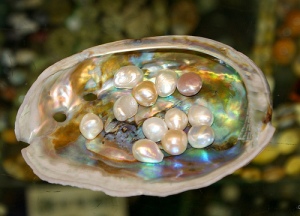 Some gems on creativity and solitude…
Some gems on creativity and solitude…
Leo Babauta opens a great piece on creativity and solitude with this quote: “In order to be open to creativity, one must have the capacity for constructive use of solitude. One must overcome the fear of being alone.” ~Rollo May
Like Leo, I am endlessly fascinated with creativity. When I worked assiduously through the wondrous ‘Style Statement‘ book by Carrie McCarthy and Danielle LaPorte, I ended up with ‘Sacred Creative’ as the two key words for where my essence meets my expression. I love reading biographies of writers, looking at their workspaces and engaging with how they created their work.
Leo’s article, The No 1 Habit of Highly Creative People, comes up with solitude as the No 1 habit for creativity and reflects on the ways solitude fuels and supports creativity. He includes some thoughts around solitude as a source of strength from current creative people as well as some famous creative people from the past . His article, linked to this one, The Little But Useful Guide to Creativity, is a further reminder of ways of being grounded in a creative mindset. The ones that ring true for me: long walks on the beach, shutting out the outside world, getting things down and working in small steps.
I love May Sarton’s ‘Journal of a Solitude’ for capturing what it’s like sometimes when solitude and creativity come together and the raw, vulnerable feelings that come up when you do manage to get that space and time:
‘The ambience here is order and beauty. This is what frightens me when I am first alone again. I feel inadequate. I have made an open place, a place for meditation. What if I cannot find myself inside it?
I think of these pages as a way of doing that. For a long time now, every meeting with another human being has been a collision. I feel too much, sense too much, am exhausted by the reverberations after even the simplest conversation. But the deep collision is and has been with my unregenerate, tormenting and tormented self. I have written every poem, every novel for the same purpose – to find out what I think, to know where I stand. I am unable to become what I see. I feel like an inadequate machine, a machine that breaks down at crucial moments, grinds to a dreadful halt, “won’t go,” or, even worse, explodes in some innocent person’s face.” (p12)
And I love these words from the end of the No 1 Habits piece for helping to still that maelstrom of vulnerability:
‘Lastly, being creative means living a creative life. Expect yourself to have one. Believe you are creative. Know that you are. Make that the most important habit of all.’
A recent Creative Penn podcast interview ‘Authenticity And Creative Expression With Robert Rabbin’ provides some excellent tips for moving through these barriers and into the authentic and creative directions of your plans and dreams. The interview provides practical advice on how to conquer your fear of being authentic. Being playful and having fun are part of the solution. There is some really great advice to think about for moving on with creative adventures like a writing life.
Image, Gold enamelled gem-set pendantby kotomigd from flickr and used under a Creative Commons license with thanks
![]()







‘Get to know your blog and what it’s about and let it develop organically. I have taken that route and it’s been real fun and now I’m getting right into it naturally. You want it to be enjoyable not a chore.’
Yes, I think that is exactly the point: enjoy yourself, your blog and what it’s creating in the process. And that is something I am enjoying immensely and is perhaps the true heart of the matter.
People who honestly mean to be true really contradict themselves much more rarely than those who try to be ‘consistent’.
Oliver Wendell Holmes
Image, Morocco, Marrkech, Pattern by Frank Douwes from flickr and used under a Creative Commons license with thanks